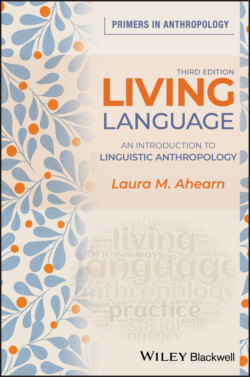Читать книгу Living Language - Laura M. Ahearn - Страница 49
Written Texts
ОглавлениеMany linguistic anthropologists look closely at various written texts: historical documents copied from archives, personal letters (such as the love letters I studied – see Ahearn 2001a), newspaper articles, e-mails, or official documents. Researchers who are interested in studying literacy practices – the ways in which people produce, consume, or refer to written texts in their everyday lives – often analyze written texts as mundane as the shopping lists that are pinned on refrigerators – or the billboards that litter urban “linguistic landscapes” (cf. Shohamy et al. 2010; Blackwood et al. 2016), drawing insightful conclusions about important cultural values and social relations. Even linguistic anthropologists who are not primarily concerned with literacy practices often find that paying close attention to the intersections between texts and contexts is not only beneficial but unavoidable in societies that are saturated by the written word.
